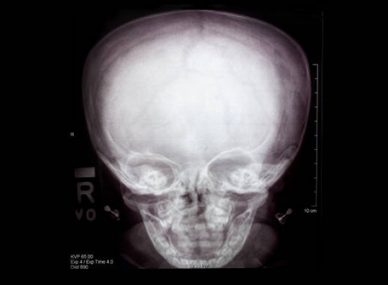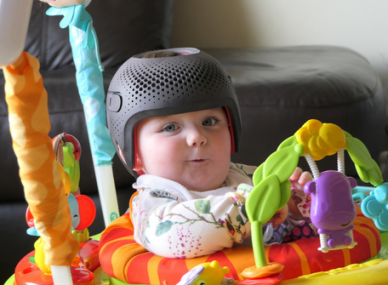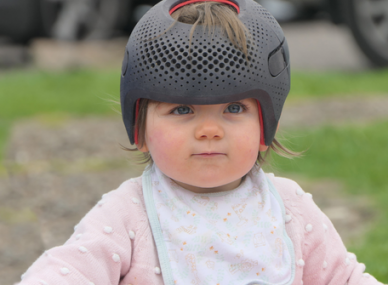Head shape abnormalities are one of those developmental disorders that parents can notice within the first year after childbirth. In this specific condition, the shape of a child can be asymmetric and different from normal. The abnormal growth of the skulls can be the major reason for such a condition. Well, approximately 85 percent of the head or skull development of a child happens during the first year. So, if a child is born with an abnormal head shape, it is necessary to take the path of early orthotic intervention to round out the shape of the baby’s head slowly and successfully in every stage of their growth. The therapeutic method makes the most of what the baby is doing at that time, which is growing.
Cranial Helmet Therapy for Babies- A Proven Treatment for Head Shape Abnormality
Cranial Remolding Orthosis, also known as a cranial helmet or cranial band, is a therapeutic approach that aims for appropriate skull growth. Cranial helmet molding therapy gently helps prevent the excessive growth of the head in the prominent direction and leaves spaces free for the flattened areas of the baby’s head to grow to allow it to form a rounder, even/symmetric shape.
What Should You Start
The cranial remolding process promotes reshaping the head of an infant. So, it is important to start early to get the desired result. The optimal age for helmet therapy for plagiocephaly is between 4 and 6 months. This is the prime time for starting treatment for any type of skull deformation. This treatment can continue up to 18 months depending on the pace of the growth of a child’s skull.
Why Your Child Needs Cranial Remolding Orthosis or Helmet Therapy
The cranial remolding process or helmet therapy is used to correct different types of head asymmetry or skull deformation. This therapy is appropriate for children with plagiocephaly, brachycephaly, and scaphocephaly. These conditions basically arise due to the infant’s position in the womb, premature birth, or torticollis. So, if your child is diagnosed with any of these deformities, helmet therapy is the most recommended treatment for your infant.
Let’s Explore the Journey of a Baby Diagnosed with Plagiocephaly or Other Skull Deformations
Cranial remolding involves a long journey for parents and their babies. Let’s have a look at the patient journey of cranial remolding patients and understand how it starts and ends by going through every step.
Diagnosis of Patient
The first step of every therapy has to be a diagnosis as it helps the therapists understand the condition of the patient and develop a therapy program tailored to the condition. Cranial remolding patients experience the same. A helmet therapy specialist will evaluate the infant’s head and diagnose the type of asymmetry he/she has in order to understand if the child really needs the cranial remolding treatment. In many cases, a baby’s condition is fixed on its own without any intervention or therapy as the condition is not severe or if the flatness happens due to the sleeping position. But, if that is not the case and if the flatness stays the same even after some time, the cranial remolding specialist will recommend the therapy.
A Thorough Examination of the Child’s Head
After confirming that your child needs helmet therapy, the therapists will start with the evaluation process where they will examine the infant’s head shape thoroughly and understand the severity of the asymmetry. During this step, the specialist will take the measurements and photographs of the head to determine the treatment program.
The Planning of Treatment
After the complete evaluation, the cranial remolding therapists will create a treatment plan for the patient to help him with head deformities. This plan will be tailor-built for the child where all processes will be mentioned for the treatment including the type of cranial remolding helmet the infant will wear during the treatment, the duration of the treatment, and the follow-up appointments.
Fitting Process
The most important stage of the journey of a cranial remolding patient is the fitting process as the end result will significantly depend on it. As a cranial remolding helmet is custom-made and designed to fit the infant’s head shape, the therapists need to set the helmet appropriately. As the helmet needs to be placed accurately on the head of the parents, it may take hours to complete and several takes to make the necessary adjustments to confirm a perfect fit.
The Start of Treatment
Now the adjustment of the helmet is done, the treatment process starts. The infant needs to wear the helmet for most of the time of the day and they can remove it only for baths and cleaning. The time period of wearing the helmet can be different for each baby, depending on the severity of the deformity. However, in most cases, infants need to wear the helmet for three to six months continuously to successfully reshape the head.
Follow-Up Appointments with Therapists
During the treatment process, parents must visit the therapists based on the schedule of follow-up appointments. These visits let the helmet therapy specialists check and monitor the progress of the treatment by taking measurements of the head shape and making adjustments to the helmet.
End of Treatment- The Last Stage
When the treatment process is complete, parents have to visit the cranial remolding specialist for a last time to make sure that the infant’s head shape is now perfect and the asymmetry has been corrected without any problems.
A One-stop Rehabilitation Center for Cranial Remolding Orthosis or Helmet Therapy for Babies
The journey of cranial remolding patients is not simple. However, when you get honest and expert guidance from a cranial remolding specialist, you can be sure that ultimately your child’s head shape will be corrected. If your child has skull deformities and you want to understand the process of cranial remolding to be prepared for the journey ahead, contact Hope AMC, a trusted rehabilitation center for various developmental delays.
The therapists at our state-of-the-art multispecialty clinic in Dubai offer cranial helmet therapy for plagiocephaly and other head deformities to help babies overcome these challenges and avoid any future complications that can occur due to such conditions. We promise complete medical care and facilities to children, involving diagnostics and wellness services with the help of our team of internationally certified doctors and medical experts.
Schedule an appointment with our helmet therapy specialists to satisfy all your queries regarding Cranial Remolding Orthosis or helmet therapy.






